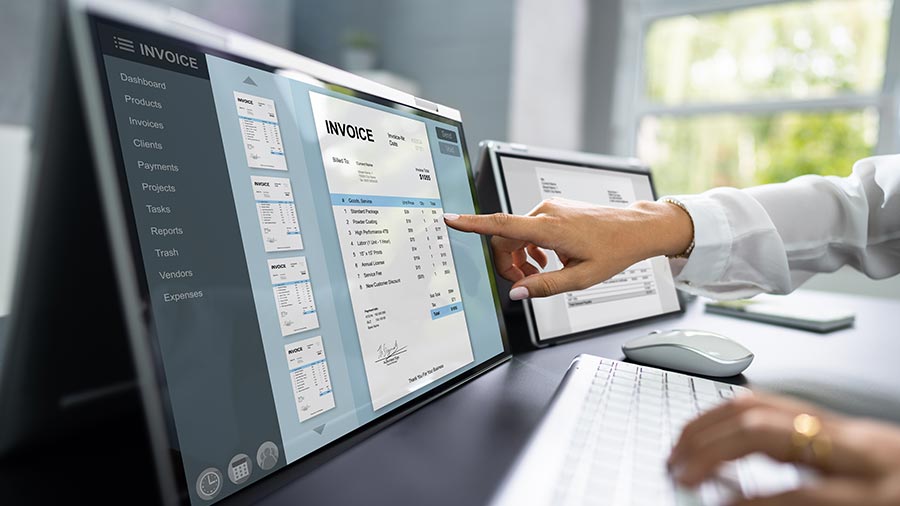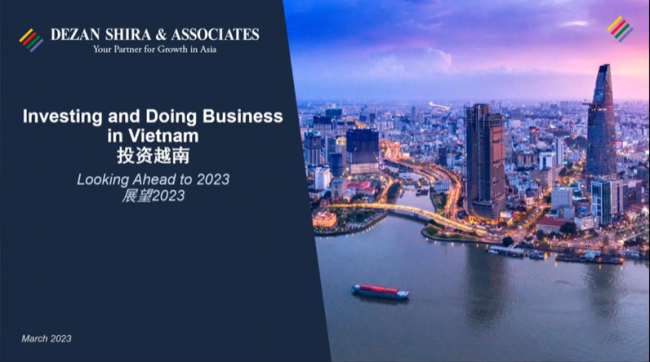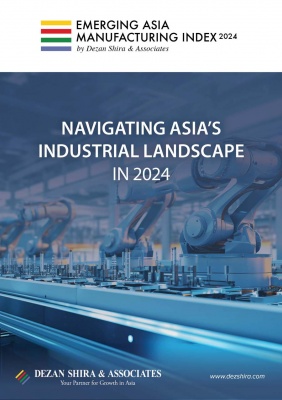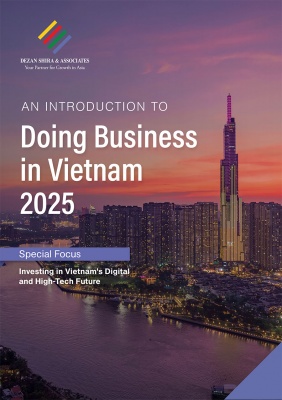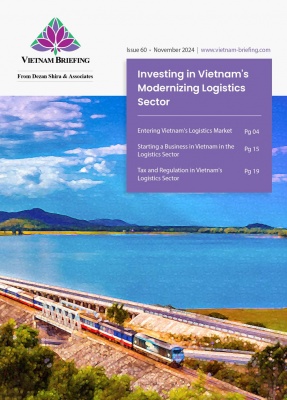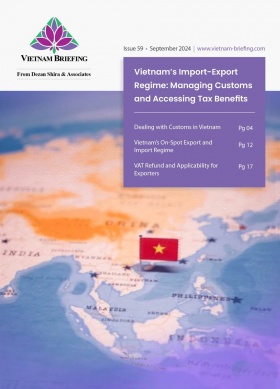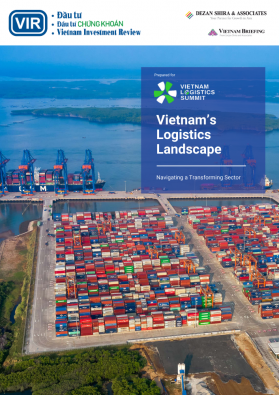Driving Growth: Business Opportunities in Vietnam’s North-South High-Speed Railway Project
Vietnam recently announced plans to construct its North-South high-speed railway, which is expected to significantly improve its underdeveloped rail system and transportation infrastructure. Additionally, this US$67 billion project is anticipated to create valuable opportunities for investors, marking a milestone construction initiative in Vietnam in recent history.
On November 30, the 15th National Assembly of Vietnam approved the North-South high-speed rail project.
This railway, which will travel at speeds of up to 350 kilometers per hour, will span 1,541 kilometers and connect 20 cities and provinces, including major industrial and municipal hubs like Hanoi, Ninh Binh, Nghe An, Da Nang, Dong Nai, and Ho Chi Minh City (HCMC). The total investment for the project, projected to reduce the current journey time by rail from 30 hours to around five, is estimated to be around US$67.6 billion.
This initiative is ambitious not only in size but also in implementation, as the government aims to prioritize domestic contractors with help from foreign experts and investors.
Read More: Vietnam and China Manufacturing: Key Comparisons for Business Strategies
Vietnam North-South high-speed rail planning
The proposed Vietnam North-South high-speed rail will cover 1,541 km and connect Ngoc Hoi Station in Hanoi to Thu Tiem Station in HCMC. The entire line will feature a new dual-track system with a gauge of 1,435 mm, designed for up to 350 kph speeds. It will support an axle load capacity of 22.5 tonnes, including 23 passenger stations and five freight stations.
The project will be funded through public investment, and preparations for a feasibility study report are scheduled to begin in 2025 to complete the project by 2035. The project’s preliminary total land use demand is about 10,800 hectares, and 120,836 people are expected to need resettlement.
According to the Board of Directors of the Transport Engineering Design Incorporated (TEDI), the comprehensive implementation plan is divided into three phases:
- First Phase (2025-2027)
This phase will focus on preparing the feasibility study and the Front-End Engineering Design (FEED) for the Engineering, Procurement, and Construction (EPC) tender documents.
- Second Phase (2027-2035)
This phase will involve conducting EPC tenders, selecting contractors, negotiating and signing contracts to initiate construction, purchasing vehicles and equipment, and transferring technology.
During the second phase, railway construction will be divided into three sections:
- Hanoi – Vinh;
- Vinh – Nha Trang; and
- HCMC – Nha Trang.
The entire route is projected to be completed by 2035. Construction for the Hanoi – Vinh and Ho Chi Minh City – Nha Trang sections is expected to begin by the end of 2027. The component projects for the Vinh – Nha Trang section will start between 2028 and 2029.
- Final Phase (2035 onwards)
This phase will include trial operations, system safety evaluations, and the transition to full commercial operation.
Planned Route: The 23 Passenger Stations of the North-South High-Speed Railway
- Ngoc Hoi (Ha Noi)
- Phu Ly (Ha Nam)
- Nam Dinh (Nam Dinh)
- Ninh Binh (Ninh Binh)
- Thanh Hoa (Thanh Hoa)
- Vinh (Nghe An)
- Ha Tinh (Ha Tinh)
- Vung Ang (Ha Tinh)
- Dong Hoi (Quang Binh)
- Dong Ha (Quang Tri)
- Hue
- Da Nang
- Tam Ky (Quang Nam)
- Quang Ngai (Quang Ngai)
- Bong Son (Binh Dinh)
- Dieu Tri (Binh Dinh)
- Tuy Hoa (Phu Yen)
- Dien Khanh (Khanh Hoa)
- Thap Cham (Ninh Thuan)
- Phan Ri (Binh Thuan)
- Muong Man (Binh Thuan)
- Long Thanh (Dong Nai)
- Thu Thiem (HCMC)
Source: Vietnam.vn
Freight transport plans along Vietnam’s North-South high-speed railway route
Vietnam’s Ministry of Transport projects that the demand for goods transported by rail along the North-South corridor will reach approximately 18.2 million tonnes annually by 2050.
The new North-South high-speed railway will primarily transport passengers, but also light goods and high-value e-commerce items. When necessary, the train schedule will be adjusted to accommodate the transportation of heavy goods for security, defense, and other essential purposes. Meanwhile, the existing North-South railway will undergo upgrades to enhance its capacity for freight transport. This route is particularly advantageous for transporting heavy goods, bulk commodities, and liquid materials.
|
Market Share of Different Transport Methods Along Vietnam’s North – South Corridor (2023) |
||
|
|
Passenger (%) |
Cargo (%) |
|
Roads |
62.9 |
50.8 |
|
Air |
34.2 |
0.1 |
|
Railways |
2.9 |
0.7 |
|
Sea |
– |
35.6 |
|
Inland waterways |
– |
12.9 |
Source: VNExpress
Strategic cargo stations
The upcoming high-speed railway will have five cargo stations connecting key economic and logistics hubs, especially major seaports, across Vietnam.
- Thuong Tin station (Hanoi)
This station will connect with national railway lines, Hai Phong port, and the international transport route via Lao Cai – Hanoi – Hai Phong and Hanoi – Lang Son.
- Vung Ang station (Ha Tinh)
Vung Ang station will combine passenger and cargo transport, connecting the Vung Ang economic zone with supplies of key products such as batteries and electronic components. According to Ha Tinh’s provincial master plan for the 2021-2030 period, with a vision to 2050, this economic zone is anticipated to become a major growth center for the province.
Additionally, the station will facilitate international transport through the Mu Gia – Vung Ang – Vieng Chan railway line, enhancing economic cooperation with Laos.
- Chu Lai station (Quang Ninh)
Chu Lai cargo station will connect industrial zones, the ports of Ky Hoa and Dung Quat, and Chu Lai airport, aiming to become a logistics center for international cargo transfer. The station is planned in alignment with the development of the Chu Lai economic zone. In its provincial master plan for the 2021-2030 period, with a vision to 2050, Ha Tinh positions the economic zone as its prime catalyst for development.
- Van Phong station (Khanh Hoa)
This station will connect cargo ports, logistics centers, and the current North-South railway line. The station’s surrounding area is also planned to connect with urban railway systems and other economic centers in Khanh Hoa province. Simultaneously, plans are underway to turn Van Phong Bay into a modern coastal economic center, which is central to the development of the South Central Coast and Central Highlands.
- Trang Bom station (Dong Nai)
The station will connect the industrial hub of Dong Nai with the railway network in Ho Chi Minh City. This link will facilitate international transport with Cambodia via the HCMC – Loc Ninh and HCMC – Moc Bai routes, while also connecting with the Mekong Delta via the HCMC – Can Tho line.
Capital mobilization and allocation for the high-speed railway project
According to the Vietnam National Assembly’s Standing Committee, revenues in the first four years of the high-speed rail’s operation will only be able to cover operational and maintenance costs; therefore, state support for infrastructure maintenance is required.
The project funding will span three medium-term budget cycles, including:
- 2021–2025: VND 538 billion (US$21.22 million) for preparatory work;
- 2026–2030: VND 7 trillion (US$31.16 trillion); and
- 2031–2035: VND 3 trillion (US$34.33 trillion).
Budget allocation will be adjusted according to project progress, exempting the project from financial feasibility assessments required by the 2019 Public Investment Law.
Labor demand
According to a report from the Ministry of Transport, the North-South high-speed rail project will create more than 200,000 jobs throughout every stage, including:
- 180,000 jobs in the construction stage;
- 13,880 jobs in operation and exploitation activities;
- 700 managerial positions; and
- 1,200 positions for consulting engineers.
Accordingly, the human resource training program will be structured to meet project implementation requirements through three training types—domestic, international, and hybrid—and four qualification levels: technical workers, engineers, master’s, and doctoral degrees. It targets five groups: government management agencies, project management units, operational units, training institutions, and research institutions.
Responsibilities of stakeholders
The National Assembly has designated specific responsibilities to each competent governmental agency and other stakeholders to utilize special mechanisms for implementing the projects.
If the National Assembly is not in session, the National Assembly Standing Committee will decide on project investment adjustments, except for total investment increases.
Central government
The National Assembly allows the government to set criteria for selecting state-owned enterprises or other Vietnamese enterprises to provide railway industry services and technology transfer.
Meanwhile, the Prime Minister will be responsible for:
- Issuing government bonds to supplement the annual budget and investment plan if the budget cannot meet progress requirements;
- Mobilizing Official Development Assistance (ODA) and preferential foreign loans without the need for proposal submission;
- Applying foreign donor regulations when Vietnamese law does not provide guidance or has different regulations;
- Utilizing annual increases in central budget revenue and savings for the project;
- Deciding the list of railway industrial services and goods assigned to state-owned enterprises or ordered from Vietnamese organizations; and
- Adjusting medium-term and annual public investment plans among ministries, central agencies, and localities to allocate funds for the project.
Local governments
Provincial governments have the authority to adjust extraction quotas, extend mining licenses, and increase the capacity for construction materials without the need for provincial plan adjustments, project proposals, or environmental impact assessments. This regulation applies to licensed and active mineral mines with remaining resources.
For mineral mines currently under survey but not yet licensed, provinces can modify the geological and mineral management plans without requiring formal provincial plan adjustments.
Additionally, the National Assembly has outlined the responsibilities of provincial people’s committees and people’s councils in relation to this project as indicated below.
- Provincial People’s Committees can:
- establish and adjust zoning plans for areas around railway stations to determine land recovery boundaries and areas; and
- adjust usage of land around railway stations to exploit land resources and increase land value.
- Provincial People’s Councils can:
- use local budgets for compensation, support, and resettlement within the railway station area’s zoning plans to create land for urban development; and
- retain 50 percent of the revenue generated from land resource exploitation after costs, with the other 50 percent going to the central budget.
Authorities can divide the project into smaller components or sub-projects.
Organizations and individuals
Organizations and individuals are permitted to exploit minerals for the project without licensing formalities and without needing to prepare investment projects or environmental reports, provided they commit to environmental protection.
For mines that have exhausted their reserves, the investor can propose to the Provincial People’s Committees that new mines be added to the construction material survey dossier for the project.
Organizations and individuals leading scientific and technological activities for the project are authorized to use limited bidding, designated bidding, or direct ordering to select contractors for goods and services procurement.
In addition, contractors must prioritize domestic products and services. For international bids, tender documents must include technology transfer and training commitments for Vietnamese partners to gradually master management, operation, and maintenance.
Beneficiary sectors
According to Yuanta Securities Vietnam, various sectors will benefit directly from the North-South high-speed rail project implementation, particularly:
- Steel: Steel products and components will constitute the largest portion of materials used in the Vietnam North-South high-speed railway project. The steel industry will benefit notably as the government prioritizes the use of domestic steel products.
- Construction materials: Companies with substantial reserves in stone, cement, and titles will benefit from long-term extraction rights or the timely granting of new licenses.
- Electrical construction and equipment: Leading companies with large production capacities participating in major projects are expected to benefit.
- Construction: Although the main contractor and consultancy may likely be foreign companies, local contractors can still secure subcontracting agreements, particularly reputable firms.
- Banking: Some large-scale banks with the lowest capital costs and interest rates may participate in project financing.
Conclusion
The Vietnam North-South high-speed railway project represents a transformative leap for Vietnam’s transportation infrastructure, promising to enhance connectivity, significantly reduce travel times, and stimulate economic growth across the country.
As construction progresses through its phased approach, prioritizing domestic contractors with foreign expertise, Vietnam is positioning itself to create a more integrated and modern rail system that will ultimately benefit both investors and the populace. The successful execution of this ambitious initiative is crucial for Vietnam’s long-term economic development and aligns with the country’s vision of modernizing its infrastructure to better serve its growing industrial and urban centers.
About Us
Vietnam Briefing is published by Asia Briefing, a subsidiary of Dezan Shira & Associates. We produce material for foreign investors throughout Asia, including ASEAN, China, and India. For editorial matters, contact us here and for a complimentary subscription to our products, please click here. For assistance with investments into Vietnam, please contact us at vietnam@dezshira.com or visit us at www.dezshira.com.
Dezan Shira & Associates assists foreign investors throughout Asia from offices across the world, including in Hanoi, Ho Chi Minh City, and Da Nang. We also maintain offices or have alliance partners assisting foreign investors in China, Hong Kong SAR, Dubai (UAE), Indonesia, Singapore, Philippines, Malaysia, Thailand, Bangladesh, Italy, Germany, the United States, and Australia.
- Previous Article Vietnam’s Top Investors and FDI Beneficiaries – January to November 2024
- Next Article NVIDIA Expansion into Vietnam: Potential for AI Sector Growth


